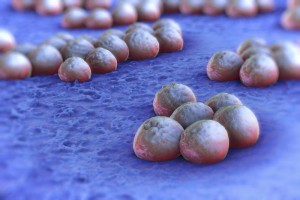Can UV Light Reduce Recurrent Infections?

Machines that generate ultraviolet (UV) light may soon help hospitals battle drug-resistant pathogens and reduce recurring patient infections, according to results from a randomized trial conducted by Duke Health.
When it was used in conjunction with existing disinfection practices to clean patient rooms, UV light reduced new major infections of 4 major superbugs by 30%.
The study involved 9 southeastern hospitals from 2012 to 2014 and examined the effects of 3 cleaning approaches on the transmission of methicillin-resistant Staphylococcus aureus, vancomycin-resistant enterococci, Clostridium difficile, and Acinetobacter species.
Deverick J. Anderson, MD, an infectious disease specialist at Duke and lead investigator of the study, describes the effort as the first well-controlled study showing a “meaningful difference in patient outcomes.” The effectiveness of UV light in killing germs is well known, but this trial is the first to focus on the positive results of study participants.
“Some of these germs are hearty and can live in the environment long enough that, even after a patient with the organism has left the room and it has been cleaned, the next patient in the room could potentially be exposed,” explains Anderson.
The study recorded more than 600,000 hospitalizations across the 9 participating hospitals, including 3 Duke University Health System hospitals, a US Veterans Affairs hospital, and several smaller community health care centers. About 5% of patients at these hospitals were considered to have been potentially exposed to the target pathogens, because they had been hospitalized in a room where someone with a known positive culture or infection of a drug-resistant organism had previously been treated.
Participating hospitals compared 3 schemes for killing the germs: (1) irradiating the room with UV after using quaternary ammonium disinfectant (Quat), which is standard practice in most hospitals, (2) replacing Quat with bleach, and (3) replacing Quat with bleach and irradiating the room with UV light.
The most effective strategy was use of standard disinfection by Quat followed by a 30- to 50-minute cycle with a portable UV irradiating machine.
The machine emits a slight odor similar to a tanning bed, notes Anderson, so the next patient would be greeted with a sign informing them that the aroma represented “the new smell of clean.”
“The staff would open drawers, open doors to the bathroom, and roll the machine into the center of the room,” says Anderson. “UV light works through reflective properties, killing organisms even in the shadows if there is space for light to reflect. The light disrupts the DNA of these germs and kills them.”